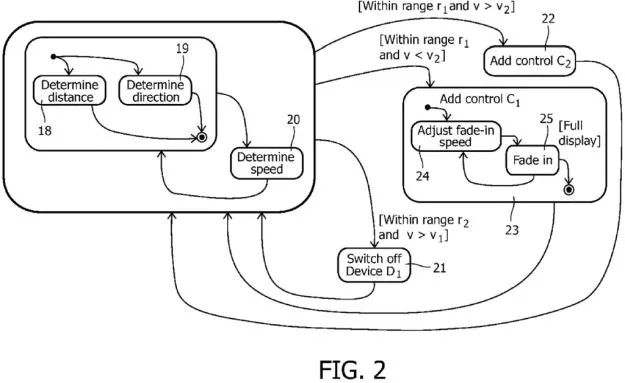Method Of Providing A User Interface For Controlling A System: Technical
From:大岭IP
Updated:2021-06-23
28 April 2021 | Patrick Heckeler - Bardehle Pagenberg
This decision concerns a European patent application for providing a user interface for controlling a system based to the body movement of the user. This application is one of the few applications relating to user interface that have been granted. Here is the practical takeaways from the decision T 3131/19 (Body movement dependent user interface/PHILIPS) of 7.4.2021 of the Technical Board of Appeal 3.5.05:
Key takeaways
Providing an improved and more flexible user input interface for controlling a system is a technical problem.
The invention
The European patent application concerns a method and a system for providing a user interface for controlling the system relative to the responsiveness of the user action. In particular, the invention provides a sensor for observing a body and a perceptible user interface. Based on the rate of displacement of the body, the underlying system is controlled.
In a simple example, a coffee maker has a mechanical switch and a sensor capable of determining the displacement rate of the user's hand approaching the switch. Based on the rate of approach, the functionality of the switch changes. For instance, on the one hand, if the rate is higher (rapid action to the switch), the controller changes the switch functionality to a first action (stop pouring coffee). On the other hand, if the rate is slower (hand slowly brought to the switch), the switch functionality is converted to an ON/OFF function of the coffee maker.
Therefore, the rate of displacement determines the user interface of the functionality of the system.

Fig. 2 of WO 2009/069050 A1
Here is how the invention was defined in claim 1:
Claim 1 (main request)
Method of providing a user interface for controlling a system (1;27), including the steps of:
observing a presence of a body or body part of a user in a certain environment of a sensor device (6,14-17;30);
and being characterized by further comprising:
making available to the user at least one perceptible part (28,34) of the user interface in association with a particular functionality for interacting with the system (1;27) controlled by the user interface in dependence on a rate of displacement of the body or body part of the user observed in the certain environment; and
wherein making available to the user the at least one perceptible part of the user interface in association with the particular functionality for interacting with the system (1;27) controlled by the user interface comprises providing one of a plurality of user input controls associated with respective different actions of the system controlled by the user interface in dependence on the rate of displacement of the body or body part of the user observed in the certain environment.
Is it patentable?
The first-instance Examining division had refused the application for lack of novelty. The cited prior art document disclosed a video game where the user could control the character by moving the body.
On appeal, the Board agreed with the appellant that the cited document only disclosed using the displacement of the body to interact with the user interface (i.e., the character on-screen) and not to provide a part of the user interface associated with the functionality of controlling the system. Therefore, the claim was considered novel.
When deciding whether the distinguishing feature was technical, the Board provided the following reasoning:
The technical effect of the essential differences detailed above between the subject-matter of claim 1 and the disclosure of D1 is thata part of the user interface provides different functionalities for controlling the system depending on the rate of displacement of a user's body part towards the user interface.
Theobjective technical problem can thus be formulated, as proposed by the appellant, as how to provide an improved and more flexible user input interface for controlling a system.
The Board then concluded that the subject-matter of the claim is inventive: None of the cited documents aim at improving a user interface. Moreover, none of the cited documents discloses the distinguishing feature.
More information
You can read the whole decision here:T 3131/19 (Body movement dependent user interface/PHILIPS) of 7.4.2021
The content of this article is intended to provide a general guide to the subject matter. Specialist advice should be sought about your specific circumstances.

